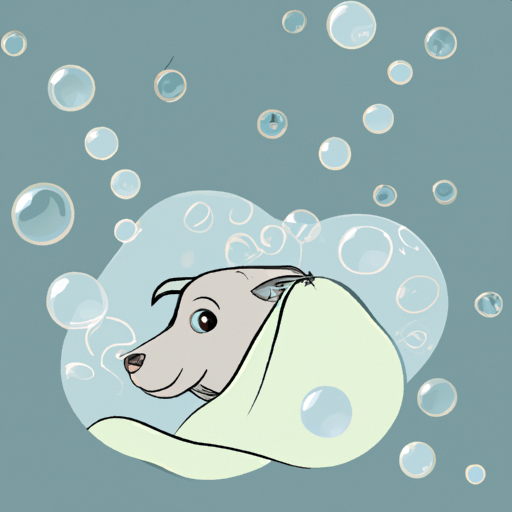Have you ever marveled at how your dog insists on wriggling under a blanket, staying there for what seems like an inordinate amount of time? You might have found yourself wondering, how do dogs breathe under blankets? Aren’t they suffocating under there?
Despite appearances, your canine friend has not developed superhero powers. Instead, they’re using their unique biological abilities and characteristics to create a haven under your blankets.
Key Takeaways:
- Dogs can breathe under blankets due to their efficient respiratory system.
- The blanket environment is cozy and secure, appealing to a dog’s primal instincts.
- It’s crucial to ensure the blanket is breathable and not too heavy.
- Dogs should always have an easy way out from under the blanket.
Table of Contents:
- Dogs and Their Extraordinary Respiratory System
- The Appeal of Blankets for Dogs
- Safety Precautions
- FAQs
Dogs and Their Extraordinary Respiratory System
Dogs possess an incredibly efficient respiratory system. Unlike humans, dogs have a larger nasal cavity, which allows for better air circulation. This anatomical advantage enables them to breathe comfortably under the blanket for an extended period.
A dog’s nostrils can move independently, which is a talent known as stereo olfaction. This ability allows dogs to determine which nostril a particular smell is coming from, thus helping them to create a “mental map” of their surroundings using only their sense of smell. This is especially useful when they’re under a blanket and can’t see their environment.
The Appeal of Blankets for Dogs
Why do dogs love burrowing under blankets? The answer lies in their primal instincts. Before domestication, dogs, like their wolf ancestors, would burrow into leaves and snow to keep warm and safe. Today’s dogs retain this instinct, finding comfort and security in burrowing under blankets.
Dogs also have a higher body temperature than humans and can tolerate warmer environments. This explains why they don’t mind the heat and stuffiness that can accumulate under a blanket.
A cozy blanket can also be a sanctuary for an anxious dog. The confined space and darkness can provide a sense of security, helping to calm their nerves. Here’s a great article on how to calm an anxious dog.
Safety Precautions
While it’s generally safe for dogs to burrow under blankets, some precautions should be taken to ensure your dog’s safety.
- Make sure the blanket is breathable and not too heavy. This is especially important for small dogs and puppies who may be unable to move a heavy blanket.
- Always ensure your dog has a clear and easy way out from under the blanket. They should never be trapped.
- Check on your dog regularly. If they seem distressed or overheated, remove the blanket immediately.
For some extra tips on ensuring your dog’s safety, visit One Top Dog’s safety guide.
FAQs
-
Can all dogs breathe under blankets?
While most dogs can comfortably breathe under blankets, brachycephalic breeds like Bulldogs or Pugs might struggle due to their short noses. Always closely monitor these breeds when they’re under blankets. -
Can puppies breathe under blankets?
Puppies can breathe under blankets, but extra precautions should be taken. Ensure the blanket is lightweight and breathable and always supervise the puppy. -
How long can dogs stay under blankets?
This depends on the dog’s breed, age, and overall health. Some dogs can stay under blankets for hours, while others may prefer shorter periods. Always monitor your dog and ensure they’re comfortable.
In conclusion, dogs can breathe under blankets thanks to their efficient respiratory system and their love for cozy, secure spaces. As long as safety precautions are taken, there’s no need to worry if your furry friend enjoys a good burrow under the blankets.
For more information on understanding your dog’s behavior, you can visit these articles on One Top Dog, Understanding Your Dog’s Sleeping Habits and Why Dogs Love Toys So Much.



